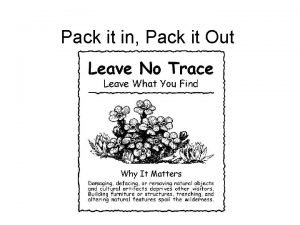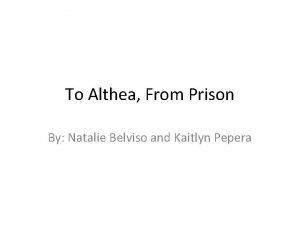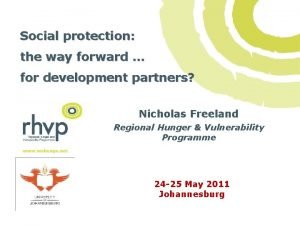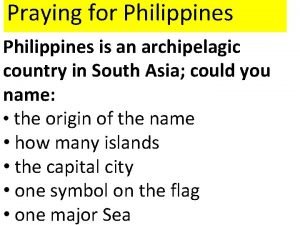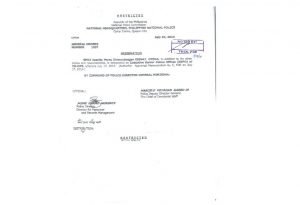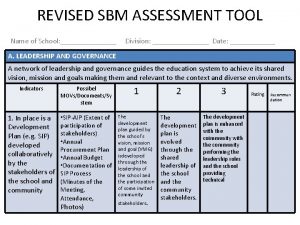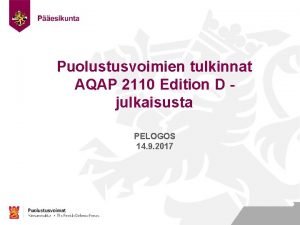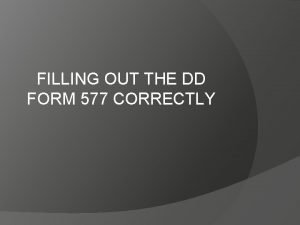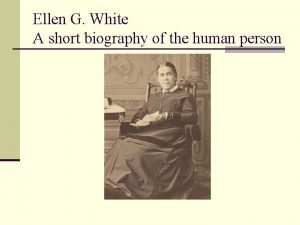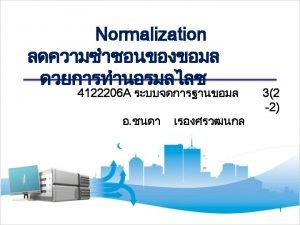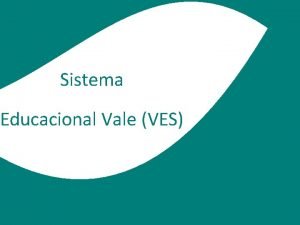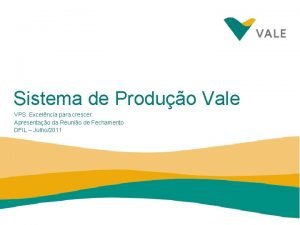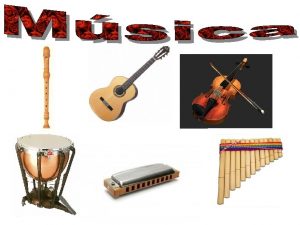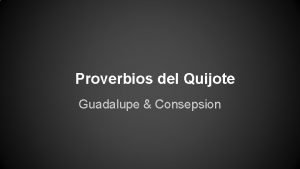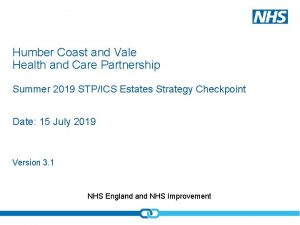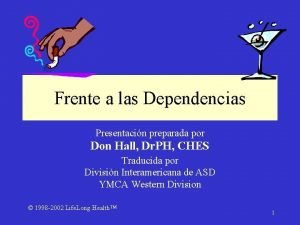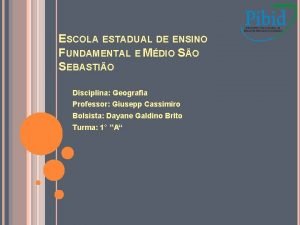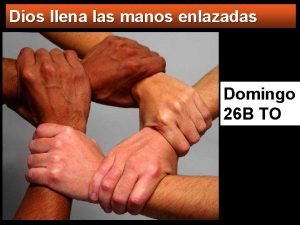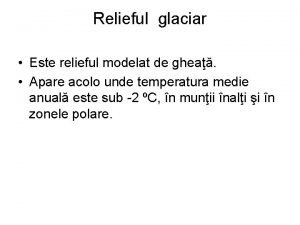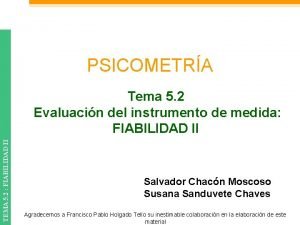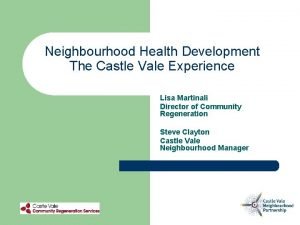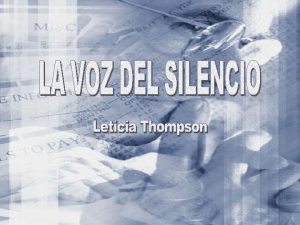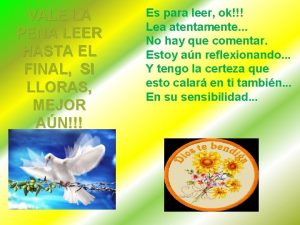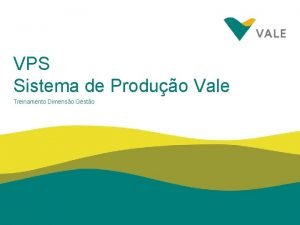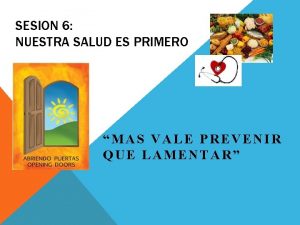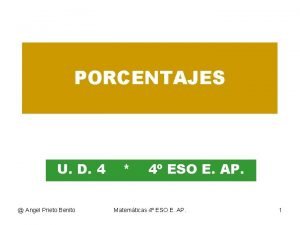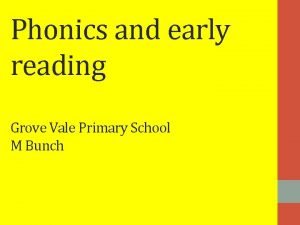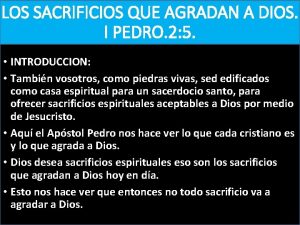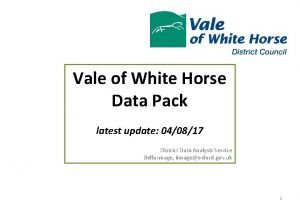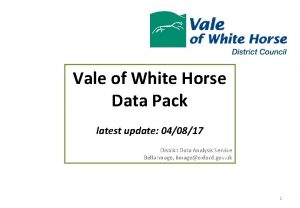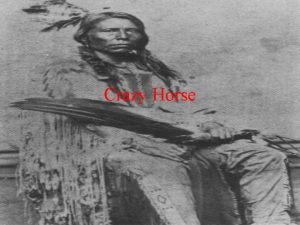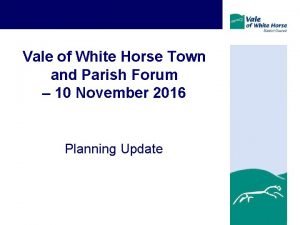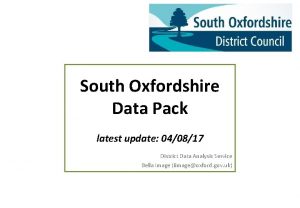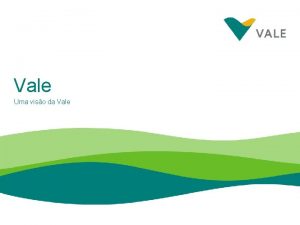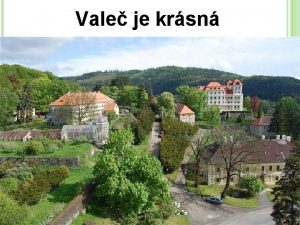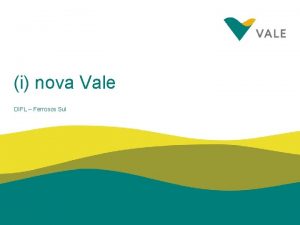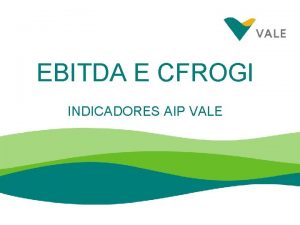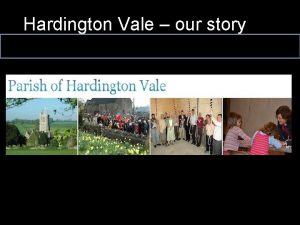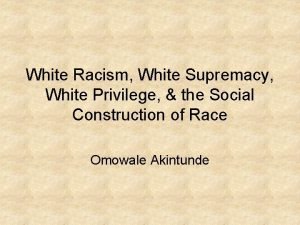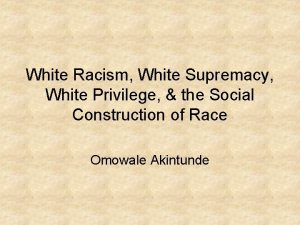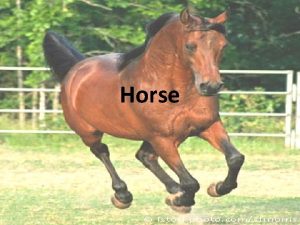Vale of White Horse Data Pack latest update






































































- Slides: 70

Vale of White Horse Data Pack latest update: 04/08/17 District Data Analysis Service Bella Image, iimage@oxford. gov. uk 1

Index (Hover a word, right click, and press ‘L’) Vale of White Horse 2017 1. Population 2. Travel 3. Economy a. Enterprises b. Employment 4. Welfare & Benefits 5. Education & Skills 6. Housing 7. Deprivation 8. Crime 9. Health 2

Can’t find what you need in this data pack? Try one of the following : • District Data website – Charts of the Month (data for whole county) – Vale of White Horse data homepage – Vale of White Horse reports for small areas (parishes, wards etc) • Local Insight (ask the District Data Analyst for a password) • JSNA (Joint Strategic Needs Assessment) for Oxfordshire Vale of White Horse 2017 • Health Profiles • Strategic Intelligence Assessment (crime data) …or the District Data Analyst will be happy to help! Bella Image (part-time) iimage@oxford. gov. uk 07483 011 142 3

1. POPULATION 4

Population: growth In mid-2016, Vale WH’s total population was estimated at 128, 738. Between 2004 and 2016, the population has grown by 12, 966 people or 11%. CHART: Population of Vale WH, 2001 -2016 133 000 1, 8% Population 1, 6% Percentage Change 1, 4% Population 1, 2% 123 000 1, 0% 0, 8% 118 000 0, 6% 0, 4% 113 000 108 000 Percentage Change 128 000 115, 8 k 115, 6 k 116, 1 k 116, 5 k 117, 4 k 118, 2 k 119, 0 k 119, 3 k 120, 0 k 120, 8 k 121, 9 k 122, 8 k 123, 6 k 124, 9 k 126, 7 k 128, 7 k 0, 2% 0, 0% 2001 2002 2003 2004 2005 2006 2007 2008 2009 2010 2011 2012 2013 2014 2015 2016 Source: ONS, 2016 mid-year estimates Vale of White Horse 2017 5

Population change • Between 2015 and 2016, the estimated population of Vale of White Horse increased by 2, 075 (1. 6%). – This is more than three times the rate of increase seen in the other rural districts. • Natural change (births minus deaths) accounts for 20% of this increase. • Migration accounts for 79% of the increase (1647 persons). This is proportionally large. – Within this category, 1187 came from within the UK and 460 were international. 2 500 CHART: Population change, 2015 to 2016 2 000 Other 22 Migration Natural Change 1 500 1 000 500 747 76 22 690 100 -500 Vale of White Horse 2017 247 971 0 Cherwell 1 647 Oxford -1 369 406 South Oxf Vale WH West Oxf 78 71 -86 Source: ONS 2016 mid year estimates 6

Population change: international immigration In 2011, 10% of Vale residents were born outside the UK. • 2001 Between 2001 and 2011, the number of Vale residents born outside the UK increased from 9, 000 to 12, 300 (an increase of 37%). CHART: Country of birth of Vale residents, 2001 to 2011 – selected countries 2011 1 2351 188 895 577 382 507530 760 666 362 97 France Germany India Ireland Sources: ONS Census 2001 table UV 08; Census 2011 table QS 203 Vale of White Horse 2017 633 Poland 30 496 629 124 Romania South Africa United States

Distribution of age groups Age 65+: 20% 66% 65% 64% Working Age: 61% 63% Vale WH 62% CHART 1: Distribution of different ages 61% ≈ 2001 2002 2003 2004 2005 2006 2007 2008 2009 2010 2011 2012 2013 2014 2015 2016 Age 0 -15: 19% 61% England CHART 2: Working Age as a proportion of the population In Vale of White Horse, 61% of the population are working age (16 -64). This is below the England proportion (63%). The proportion of the population which is working-age has been declining since around 2006, due largely to the growth in those aged 65+. Vale of White Horse 2017 8

Population estimates by ward, 2015 In 2015, the largest ward in Vale of White Horse was Faringdon (7, 900 residents) and the smallest was the Hendreds (2, 900 residents). Older people (aged 65+) make up at least a quarter of the population in 2 wards (Ridgeway, Steventon & the Hanneys). The two main urban areas are: • Abingdon: 34, 044 inhabitants – (of whom 18% aged 65+) • Wantage: 13, 560 inhabitants – (of whom 22% aged 65+) TABLE: Population by ward, 2015 Source: ONS, SAPE 18 DT 8, mid-year 2015 Vale of White Horse 2017 Ward All Ages 65 plus % older Abingdon Abbey Northcourt 6, 579 1, 232 19% Abingdon Caldecott 7, 618 1, 394 18% Abingdon Dunmore 6, 322 1, 092 17% Abingdon Fitzharris 6, 429 1, 269 20% Abingdon Peachcroft 7, 096 1, 037 15% Blewbury & Harwell 6, 009 1, 311 22% Botley & Sunningwell 6, 181 1, 191 19% Cumnor 6, 267 1, 418 23% Drayton 3, 063 590 19% Faringdon 7, 922 1, 413 18% Grove North 5, 381 865 16% Hendreds 2, 869 499 17% Kennington & Radley 7, 039 1, 670 24% Kingston Bagpuize 3, 484 664 19% Marcham 4, 271 571 13% Ridgeway 3, 118 888 28% Stanford 3, 557 800 22% Steventon & the Hanneys 3, 146 784 25% Sutton Courtenay 2, 903 598 21% Thames 3, 190 671 21% Wantage & Grove Brook 6, 848 1, 440 21% Wantage Charlton 6, 712 1, 519 23% Watchfield & Shrivenham 7, 228 1, 300 18% Wootton 3, 431 767 22% Total 126, 663 24, 983 20% 9

Rural vs Urban population • Vale WH is the 10 th most rural district in the South East region (out of 67). • It has a density 2. 2 people per hectare compared with 4. 7 people per hectare across the South East and 5. 0 across England. • The 2011 Census suggested that 61% of Vale WH’s population lives in urban contexts, while the other 39% live in rural contexts. However, due to building programmes this will now have changed. Rural: village 17, 246 (14%) Rural: town & fringe 24, 260 (20%) Rural: hamlet and isolated dwellings 5, 360 (5%) Urban: city / town 74, 122 (61%) CHART: Vale W H rural vs. urban population, 2011 Census Sources: Population from ONS 2015 mid-year population estimates. Hectares from ONS Census 2011 table KS 101 Vale of White Horse 2017 10

Population projections Data Note: This graph uses subnational population projections (SNPPs) published by the ONS. These do not allow for scheduled house-building within local areas. Vale of White Horse is projected to have a population of 146, 100 in 2039. In 2039, older people (65+) are expected to make up 27% of the population. The number of older people will have increased by 64% since 2014: • 24 25 26 26 71 71 72 72 73 73 73 73 73 74 30 30 30 31 31 32 32 33 33 33 32 32 33 33 2035 2036 2037 2038 2039 40 2034 40 2033 39 2032 39 2031 38 2030 37 2029 37 2028 36 2027 35 2026 35 2025 34 2024 33 2023 32 2022 32 2021 31 2020 30 2019 30 2018 29 2017 28 2016 28 2015 27 27 2014 Population, in thousands 140 120 population 124, 900 Age 65+ Age 20 -64 Age 0 -19 160 2039: population 146, 100 80 60 40 20 0 Vale of White Horse 2017 Source: ONS 2014 -based SNPPs 11

Population projections: 85+ 7, 0% • • Proportionally, those aged 85+ represented 3% of the district’s total population in 2014. 6, 0% – This is slightly more than the England rate (2%) 5, 0% By 2039, the number of people aged 85+ in Vale of White Horse is expected to reach 8, 900. Vale of White Horse 2039: 8, 900 people (6% of all residents) 2014: 3, 400 people (3% of all residents) 4, 0% England 2039: 5% 3, 0% – This is 6% of the local population. 2, 0% • The number of individuals aged 85+ will grow by 262% between 2014 and 2039. 1, 0% England 2014: 2% 2014 2015 2016 2017 2018 2019 2020 2021 2022 2023 2024 2025 2026 2027 2028 2029 2030 2031 2032 2033 2034 2035 2036 2037 2038 2039 0, 0% CHART: Proportion of Vale of White Horse population aged 85+ Source: ONS 2014 -based SNPPs Vale of White Horse 2017 12

2. TRAVEL Data under theme of ‘travel’ is from the 2011 Census 13

Location of work, 2011 In the 2011 Census, • the number of commuters had increased by 5% since the 2001 census. • Vale WH had net commuting outflows of 900 persons. South Oxon Commuting in 24, 754 1 584 West Berkshire 1 192 Wiltshire Commuting into Vo. WH, 2011 616 0 4 000 3 946 West Oxfordshire 2 552 Cherwell 10 753 South Oxfordshire 3 051 Swindon Commuting out 25, 654 Oxford 3 574 West Oxon (incl. homeworking / no regular place of work) 37, 992 6 217 Oxford Working within Vale of White Horse 8 000 1 852 London 1 482 Cherwell 1 366 Swindon 1 355 West Berkshire 12 000 1 080 0 Commuting out of Vo. WH, 2011 4 000 8 000 12 000 Source: ONS 2001 Census table T 103 and T 10; 2011 Census table WU 03 Vale of White Horse 2017 14

Commuting: to Oxford • • According to the Census 2011 survey, 21% of commuters in Vale of White Horse travelled to Oxford to work. The area with the highest proportion was adjacent to Oxford including South and North Hinksey with 52% commuting to Oxford Middle layer super output areas Source: ONS Census 2011 table WU 02 Vale of White Horse 2017 15

Commuting: to Science Vale Number of people by local authority of residence commuting to work to Science Vale (Harwell, Milton Park, Culham) Census 2011 MAP: Oxfordshire areas with highest % of people commuting to Science Vale 64% 8% 4% 4% Total = 18, 600 Source: ONS Census 2011 table WU 01 Vale of White Horse 2017 16

Commuting: mode of travel 45 000 Taxi: 100 Passenger: 2, 700 40 000 CHART: Commuting to work in Vale WH 35 000 30 000 Source: Census 2011, QS 701 EW 25 000 20 000 Driver: 39, 800 15 000 10 000 5 000 0 Bicycle: 4, 000 Train: 1, 600 Bus: 3, 700 Public transport Car /van On foot: 5, 900 Motorbikes etc. : 1, 000 Manpower Other At the 2011 Census 58, 700 Vale WH residents commuted to work. • Of these, 9% used public transport, 73% were in a car and 17% were cycling or on foot. • Nationally 13% use public transport. Changes since 2011 are not available for Vale of White Horse specifically but national factsheets for 2016 (including on school runs and shopping trips) can be found on the National Transport Survey website. Vale of White Horse 2017 17

Home-working MAP: Home working as a proportion of those economically active by LSOA Across Vale WH, 5% of workers work from home (compared to 3% nationally and 4% in the South East). As elsewhere in the county, homeworking is highest in rural areas. In Vale WH district, the LSOA with the lowest rate of homeworking is just to the west of Grove (1. 8%). The LSOA with the highest homeworking is in the area holding the Hendreds (15. 4%). Source: ONS Census 2011 table QS 701 Vale of White Horse 2017 Lower layer super output areas (LSOAs) areas used mainly for reporting Census data. On average they have around 1, 500 residents and 650 households. 18

A third of lone older people in rural areas have no car In 2011, 13% of Vale WH households had no car. (The England figure is 26%). Urban households were more likely not to have a car. This figure is higher for lone older households (where a person 65+ lives alone). 47% of lone older households (2, 800 people) have no car. Of those who live rurally, over two-fifths have no car. In urban areas, a half have no car. 60% 50% All household types CHART: % of Vale WH households without access to a car One person aged 65+ 40% 30% 20% 10% 40% Rural Vale of White Horse 2017 15% 50% Source: ONS Census 2011 Urban 19

3 A. ECONOMY: ENTERPRISES 20

98% of Vale WH enterprises have under 50 employees CHART: Number of enterprises by sector, Vale WH 2016 In Vale of White Horse, in 2016, 89% of enterprises are ‘micro’ (ie. with 0 -9 employees). • This is similar to the England proportion of 89% A further 9% of enterprises are ‘small’ (ie. with 10 -49 employees). • This is similar to the England proportion of 9% Vale of White Horse 2017 Other; 495 Agriculture / mining, 385 Manufacturing; 270 Arts & leisure; 440 Business admin; 455 Construction, 710 5, 770 enterprises Professional, scientific & technical; 1 380 Comms, financial & property; 770 Trade & Retail; 640 Hospitality, 235 Source: Business Counts, Nomis 12/05/17 21

Enterprises across Vale WH, by MSOA The western and southern parts of the district – the areas including Uffington and Science Vale – have high numbers of enterprises. CHART: Distribution of enterprises across Vale WH, 2016, by MSOA Source: UK Business Counts, Nomis Any enterprise may have more than one local unit (premises). Definition: MSOAs (middle layer super output areas) are used for reporting Census data. They have an average of around 7, 500 residents and 3, 000 households. Vale of White Horse 2017 22

Enterprises: births & deaths 1 000 900 800 Births South Oxf 700 600 500 400 Cherwell Vale WH 485 700 650 490 510 2011 2012 655 2013 2014 Deaths 500 2015 South 600 550 660 West Oxf 2010 750 625 Cherwell 525 540 460 495 450 470 Vale WH 470 West Oxf 400 2011 2012 Vale of White Horse 2017 2013 2014 Births. Since 2010 there has been an increasing number of new businesses. • In 2015 there were 11 new businesses per 100 existing enterprises. This is lower than the national rate (15 births per 100 businesses). Deaths. Since 2010 deaths have remained roughly the same. • There were 8 deaths per 100 businesses (compared to 10 per 100 nationally). 2015 23

3 B. ECONOMY: EMPLOYMENT 24

Numbers of jobs: various estimates • There a number of sources of jobs data for Vale of White Horse. The table below shows the latest data with a note of what is included within each dataset. Source of jobs data Vale WH Note ONS Census 2011 Workplace population 62, 300 (2011) Workplace population has a usual place of work in the area, including both individuals who live and work in area and individuals who work in the area but commute from a home elsewhere. Includes all types of jobs but with some undercounting as a proportion of people will have more than one job. Available for small areas. Updated every 10 years. ONS Business Register and Employment Survey 62, 000 (2014) “Employee jobs” – from ONS survey of businesses. Excludes self-employed, government-supported trainees and HM Forces. Available for small areas. Updated annually. ONS Jobs 72, 000 (2015) A workplace-based measure, includes employee jobs, selfemployed, government-supported trainees and HM Forces. Available for LAs only. Updated annually. Vale of White Horse 2017 25

Employment: jobs through time Number of jobs: At latest count there were 72, 000 jobs in Vale of White Horse. Job Density: There around 0. 93 jobs person aged 16 -64 in Vale WH. This is the highest value since the series began. There are more jobs person compared to England (0. 84) or the South East (0. 86). 77 k 72 k 70 k 69 k 67 k 65 k 65 k 66 k 64 k 63 k 66 k 2012 2013 64 k 61 k 62 k 57 k 65 k ≈ 2000 2001 2002 2003 2004 2005 2006 CHART: Count of jobs in Vale of White Horse 2017 2008 2009 2010 2011 2014 2015 Source: ONS. Taken from Nomis “Jobs Density” 26

Employment: number of employees In 2015, businesses in Vale of White Horse employed 62, 000 people, of whom 27% were part time. (NB this excludes the self-employed). GRAPH: Count of business employees, Vale of White Horse 2015 Source: ONS Business Register and Employment survey 50 000 45 000 FULL PART TIME 40 000 35 000 Since 2009, full-time employment in Vale WH has increased by 15%. Part-time employment has been roughly stable. Definitions: “Full-time”: those working more than 30 hours per week. “Part-time”: those working 30 hours or fewer per week. Vale of White Horse 2017 30 000 25 000 20 000 42 k 39 k 38 k 40 k 45 k 15 000 10 000 16 k 17 k 5 000 0 2009 2010 2011 2012 2013 2014 2015 Definitions: “Employee” is anyone aged 16+ that an organization pays directly from its payroll, in return for a full- or part-time job or training scheme. It excludes the self -employed, voluntary workers, working owners who are not paid via PAYE. 27

Employment: by occupation In Vale of White Horse, in 2016, 56. 6% of employees were in managerial or professional occupations. • • This is higher than the rate either regionally (49. 7%) or nationally (45. 5%) In particular, 29. 2% are in professional occupations. Source: Nomis area profiles Vale of White Horse 2017 28

Employment: national comparison Source: ONS Annual Population Survey 90% Vale WH 85% 81% 80% Oxfordshire 79% 75% 74% England 70% ≈ 65% YTD YTD YTD YTD Dec-04 Dec-05 Dec-06 Dec-07 Dec-08 Dec-09 Dec-10 Dec-11 Dec-12 Dec-13 Dec-14 Dec-15 Dec-16 As measured by the Annual Population Survey, • 71% of the working age population is employed; • 10% of the working age population is selfemployed; • In all, 81% of the working aged are employed or selfemployed. This has been higher than the England rate since the series began. GRAPH: Proportion of those 16 -64 who are employed or self-employed Vale of White Horse 2017 29

Self-employment In Vale. WH in 2011, 15% of those in employment were self employed. • • Men are more likely than women to be selfemployed. Those in rural areas are more likely to be selfemployed than those in cities. 20% 18% 15% 10% 17% 15% 15% 17% 13% 5% 0% Cherwell Oxford South Oxf Vale WH West Oxf England SE CHART: Self-employment in Oxfordshire, Also older people are more likely to be self-employed than younger people. • • • Of workers aged 60+ in Vale WH, 27% are self-employed. This compares to 9% of workers aged 25 -29. (However, far fewer older people are economically active). Vale of White Horse 2017 30

Unemployment England 10, 0% Cherwell 9, 0% South Oxfordshire 8, 0% Vale of White Horse CHART: Unemployment (model-based) Source: Labour Force Survey In Mar-17, the Vale WH unemployment rate was 2. 6%. West Oxfordshire 7, 0% 6, 0% 4, 8% 5, 0% 4, 0% 3, 0% 2, 6% 1, 0% • (This is the number of people out of work, divided by the number of economically active individuals aged 16+). • This was equivalent to 1, 900 persons unemployed. D YT YT D M ar -0 M 5 YT ar 0 D M 6 YT ar 0 D M 7 YT ar 0 D M 8 YT ar 0 D M 9 YT ar 1 D M 0 YT ar 1 D M 1 YT ar 1 D M 2 YT ar 1 D M 3 YT ar 1 D M 4 YT ar 1 D M 5 YT ar 1 D M 6 ar -1 7 0, 0% Vale of White Horse 2017 31

Employees: Job Sectors CHART: Employment by sector In 2015, • 19% of Vale WH employees were in ‘Scientific, technical, professional’ employment. Other 6 000 Construction 3 100 Health 6 100 – This is more than twice the England proportion (England 9%). Vale White Horse 2015: Education 7 100 • Manufacturing 3 300 13% of Vale WH employees work in ‘Trade’ (England 16%). 61, 800 jobs Admin 5 600 • Vale of White Horse employs fewer than average people in Manufacturing, Admin, and Health. Scientific, technical, professional 11 900 Trade (motor, retail, wholesale) 8 300 Hospitality 3 700 IT, financial, property 6 700 Source: Business Register and Employment Survey Vale of White Horse 2017 32

Earnings: full-time In 2016, the median gross earnings of full-time employees resident in Vale WH was £ 632 per week (equivalent to around £ 33, 400 a year). GRAPH: Median weekly earnings for full-time workers Source: ONS Annual Survey of Hours and Earnings, 02/05/17 This is significantly higher than the national average. England average: £ 545 £ 800 £ 400 £ 583 £ 589 £ 635 £ 632 £ 575 £ 545 £ 582 Cherwell Oxford South Ox Vale WH West Ox England South East £- Vale of White Horse 2017 33

Earnings: part-time In 2016, the median gross earnings of part-time employees resident in Vale WH was £ 193 per week. GRAPH: Part time workers: (a) average earnings and (b) average hours worked This was based on an average of 18. 1 hours per week, at an average rate of £ 10. 73 an hour. (The England average for parttime workers is £ 8. 95 an hour). Source: ONS Annual Survey of Hours and Earnings, 02/05/17 £ 195 30 £ 185 28 26 24 £ 175 22 18, 6 H 18, 1 H £ 165 15, 9 H £ 155 18 H 19 H 18, 5 H 16, 9 H 18 16 £ 184 £ 164 £ 193 £ 181 £ 177 £ 183 Cherwell Oxford South Ox Vale WH West Ox England South East Vale of White Horse 2017 20 Hours worked Gross weekly earnings Hours worked 14 34

NINO registrations: breakdown in 2016 Americas 47 (6%) Other /NK 62 (8%) EU-15 132 (17%) Africa 104 (13%) Asia 137 (17%) CHART: Number of NINO registrations in Vale WH Source: DWP Stat X-plore, 02/05/17 Vale of White Horse 2017 792 In 2016, overseas nationals based in Vale of White Horse registered for a National Insurance number. 74% are aged 18 to 34. EU-Other 313 (39%) Two fifths (39%) came from EU countries other than the EU 15. (This mostly means ‘accession’ countries and/or those in Eastern Europe. ) Definition of “EU-other”: Estonia, Czechia, Slovakia, Hungary, Latvia, Lithuania, Poland, Slovenia, Bulgaria, Romania, Malta, Cyprus, Croatia 35

NINO registrations: change through time 1200 1 016 1 004 1000 791 800 954 841 792 777 753 671 665 591 600 512 400 CHART: Number of NINO registrations in Vale of White Horse, 2002 -2016 Source: DWP Stat X-plore, 02/05/17 546 460 327 200 0 02 20 03 20 04 20 05 20 06 20 07 20 08 20 09 20 10 20 11 20 12 20 13 20 14 20 15 20 20 16 There has been yearly increase in NINO registrations since 2013. However, Brexit may change the pattern in future years. Vale of White Horse 2017 This data covers NINo allocations (a) for all types of work, incl. selfemployed & part-time students (b) whatever the length of stay in the UK (c) adult overseas nationals allocated a NINo to claim benefits or tax credits. 36

4. WELFARE & BENEFITS 37

Benefit Claimants: client group bereaved; 140 other income related; 70 disabled; 540 In Feb-16, there were 4, 520 working-age benefit claimants in Vale of White Horse. • This is 5. 8% of the population. job seeker; 260 carer; 690 ESA & incapacity benefits; 2 380 lone parent; 450 CHART: Categories of benefit claimants, Nov-16 Over half of these (53%) are in the category “Employment Support Allowance or other incapacity benefits”. Vale WH has a lower proportion of working-age benefit claimants than England (10. 7%). Source: DWP working-age client group data, accessed through Nomis Vale of White Horse 2017 38

Benefit Claimants: change through time 20, 0% England 15, 0% 11% 10, 0% Vale of White Horse 6% 5, 0% CHART: Proportion of working age population on benefits Source: DWP working-age client group data, accessed through Nomis 6 v-1 No 5 v-1 No 4 v-1 No 3 v-1 No 2 v-1 No -11 No v -10 No v -09 No v -08 No v -07 No v -06 No v 5 v-0 No 4 v-0 No -03 No v 2 v-0 No 1 v-0 No 0 v-0 No No v-9 9 0, 0% In Vale of White Horse, 5. 8% of working-age residents today are on benefits, compared to 5. 6% in Nov-99. In England, today’s figure is 10. 7% compared to 14. 2% in 1999. Vale of White Horse 2017 39

Jobseekers: June 2017 5, 0% 4, 0% GRAPH: Claimants as % of economically active population, Jun-13 and Jun-17 Source: DWP through Nomis Jun-13 In June 2017, in Vale of White Horse, 0. 7% of economically active people were on unemployment benefit. This compares with a national average of 2. 3%. 4, 3% Jun-17 3, 0% 2, 6% 2, 5% 2, 3% 2, 0% 1, 5% 1, 1% 1, 0% 0, 7% 1, 3% 0, 6% 1, 4% 0, 7% 0, 0% Cherwell Oxford South Oxf Vale WH West Oxf Vale of White Horse 2017 England South. East 40

Jobseekers: Change through time GRAPH: Vale of White Horse Claimant Count, Jan-13 to Jun-17 1 200 Feb 2013 1095 1 000 In June 2017, 445 residents of Vale WH were claiming benefits in respect of worklessness (either Jobseeker’s Allowance or Universal Credit). Jun 2017 445 800 600 400 200 0 янв-13 янв-14 янв-15 янв-16 янв-17 Source: DWP (Nomis), 14/07/17 Vale of White Horse 2017 41

5. EDUCATION & SKILLS 42

GCSE attainment 70% In 2014/15, 61% of KS 4 pupils resident in Vale WH attained the benchmark of 5+ A*to C grades including English and Maths. This is above the national and the regional average. 60% 65, 0% 57, 3% 59, 8% 57, 6% 60, 6% 61, 1% 50% 40% 30% 20% CHART: Proportion of pupils achieving 5 GCSEs A*-C, incl. Maths & English 10% 0% England South East Cherwell Oxford S. Oxon Vale WH W. Oxon Source: Department for Education, 2014/15 results NOTE: data excludes pupils in private schools Vale of White Horse 2017 43

GCSE attainment: by school In 2014/5, 61% of Vale WH pupils achieved 5+ A*-C GCSEs (incl. English & Maths). 60% 57% South East England Fitzharrys School scored low on this measure, but also has the largest proportion (23%) from a disadvantaged background. 67% 51% Faringdon Fitzharrys School John Mason School Community College CHART: Proportion of pupils achieving 5 GCSEs A*-C, incl. Maths & English Vale of White Horse 2017 58% 62% King Alfred's 54% Larkmead School Source: Department for Education (2014/15 results) 44

GCSE attainment: Free school meals pupils In Aug-14, the proportion of Vale WH’s resident pupils achieving five GCSEs A*-C (including English and Mathematics) was 35%. The attainment gap (ie. the difference between FSM and non-FSM pupils) was 29 percentage points. This is higher than the national This was similar to the England rate of 34%. attainment gap of 27 percentage points. 80% 68% 70% 62% 61% 60% 64% 60% 58% 63% England FSM average 50% 40% 39% 34% 30% 29% 26% 35% 24% Free School Meals 10% Not on FSM 0% England South East Cherwell Oxford S. Oxon Vale WH W. Oxon CHART: Proportion of pupils achieving 5 GCSEs A*-C, incl. Maths & English Source: Neighbourhood Statistics, based on Aug-14 results Vale of White Horse 2017 45

Non-attainment: Free school meals pupils 40% 36% Free School Meals 35% Not on FSM In Aug-14, in Vale of White Horse, 31% 30% 25% 20% 17% of free 24% 20% school meals pupils did not achieve 5 GCSEs (A*-G) at end of Key Stage 4. 19% 17% 15% 10% 5% 5% 5% 6% 6% 5% 5% 6% 0% England South East Cherwell Oxford S. Oxon Vale WH W. Oxon This is similar to the national figure of 17%. CHART: Proportion of pupils who do not achieve 5 GCSEs Source: Neighbourhood Statistics, based on Aug-14 results Vale of White Horse 2017 46

NEETs (Not in Education, Employment or Training) 5, 0% 4, 5% Cherwell 4, 0% 3, 5% 3, 0% 2, 5% West Ox Vale WH South Ox 2. 0% 2, 0% 1, 5% 1, 0% CHART: NEETs in Vale of White Horse 0, 5% Source: Oxfordshire County Council, Early Intervention Service 1, 8% 0, 0% Apr-14 Apr-15 2. 0% In Apr 2017 of young people in Vale of White Horse were classed as NEETs. The proportions are currently very similar across the Oxfordshire districts. Vale of White Horse 2017 Apr-16 Apr-17 Definition: NEETs are young people aged 17 -19 (Years 12 to 14) who are not in education, employment or training. 47

Apprenticeship 2 500 2012/13 2013/14 2014/15 2 000 1560 1540 1640 1 500 1 000 500 0 Cherwell Oxford S. Oxon Vale WH W. Oxon CHART: Numbers participating in apprenticeship programmes Source: FE data, through Oxfordshire LEP Apprenticeship participation in Vale of White Horse has grown slightly since the programme began. However, this may change in future. This will be the last year in which apprenticeship funding is largely grant funded. From April 2017, apprenticeships will be funded through a new apprenticeship levy on businesses. Vale of White Horse 2017 48

Qualifications 60% 2004 50% 2015 Bars: Vale WH Crosses: England 37% 40% 26% 30% 20% 15% 20% 16% 15% 9% 10% 9% 12% 13% 20% 40% 6% No quals NVQ 1 NVQ 2 NVQ 3 NVQ 4+ Other 0% 8% 12% 7% 5% 11% 14% 18% No quals NVQ 1 NVQ 2 NVQ 3 48% NVQ 4+ 4% Other Source: Annual Population Survey, via Nomis In 2004, 40% of Vale of White Horse residents aged 16 -64 were at NVQ 4 or NVQ 5 (indicating a BA degree /higher diploma or above). In 2015, this had increased to 48% of Vale of White Horse residents were at NVQ 4+. This was more than the national average Only 5% of Vale WH residents have no of 26%. qualification at all. Vale of White Horse 2017 49

6. HOUSING 50

Housing: Vale WH key facts , 49, 400 households (Census 2011) Average 2016 house price: £ 330 k se a e r nc ar e 0 y e 1 g 6: era 1 v A 20 ei c i pr % 3 4 1 13% of households are in social-rented property (England 18%) 70% of households are in owned property (England 63%) Source: House price & increase: ONS, HPSSA table 9. Renting /ownership info: Census 2011. Vale of White Horse 2017 51

Social rented sector: Occupancy CHART: Occupancy of social rented households by number of bedrooms (Vale of White Horse, 2011) Single person social rented households in Vale of White Horse occupied: • 81% of 1 bed • 31% of 2 bed • 17% of 3 bed • 10% of 4 bed or more 100% 90% 2% 17% 80% 3% 10% 18% 70% 6% 10% 22% 19% 4 people in household 50% 40% 6 or more people in household 5 people in household 60% 37% 21% 19% 81% 30% 24% 20% 17% 0% 1 bedroom 2 bedrooms 15% 16% 31% 10% Vale of White Horse 2017 21% 3 bedrooms 3 people in household 2 people in household 1 person in household 10% 4 or more bedrooms Source: ONS Census 2011, table DC 4405 52

Social rented sector: over-crowding In the 2011 Census, • 3, 888 (59%) of Vo. WH social rented households had one or two bedrooms. • Of these, 305 (7. 8%) were occupied by four or more people. • On this measure of over-crowding, Vale of White Horse was above the national average. CHART: Percentage of social rented households with ONE OR TWO bedrooms that were occupied by four or more people (2011) Vale of White Horse 2017 Source: ONS Census 2011, table DC 4405 53

Social rented sector: under-occupancy CHART: Percentage of social rented homes with TWO OR MORE bedrooms Source: ONS Census 2011, table DC 4405 that were occupied by ONE person (2011) • 4, 983 (76%) of Vo. WH social rented households had two or more bedrooms • Of these, 1, 162 (23. 3%) were occupied by one person. • The rate of under-occupancy in Vale of White Horse was below the national average but above the regional average. Vale of White Horse 2017 54

Housing (un)affordability ratio In 2016, median housing was 9. 32 times the income of the average worker. • This is higher than the national value (7. 72). 12, 00 CHART: Ratio of house price to earnings (“affordability ratio”) 10, 00 9, 32 8, 00 Vale of White Horse 2017 Vale of White Horse (median) England (lower quartile) 2, 00 Vale of White Horse (lower quartile) 0, 00 98 19 99 20 00 20 01 20 02 20 03 20 04 20 05 20 06 20 07 20 08 20 09 20 10 20 11 20 12 20 13 20 14 20 15 20 16 Dividing house price by earnings gives a ratio of 9. 32. England (median) 4, 00 97 Example: In 2016, mean house price in Vale of White Horse was £ 325, 000 and median workplace earnings was £ 34, 864. 6, 00 19 the lowest quartile). 7, 72 7, 16 19 The cheapest market housing is more unaffordable, being 10. 08 times more than the income of the lowest salaried workers (both measured as 10, 08 Source: Ratio of house price to workplace based earnings, ONS. Downloaded July 2017 55

7. DEPRIVATION 56

Index of Multiple Deprivation 74% of the district’s 76 LSOAs are in the top four deciles (score 7 to 10). MAP: Index of Multiple Deprivation (2015), by decile Only one of the district’s LSOAs, in Abingdon, had a score of 2 (ie is in the 20% most deprived LSOAs in England). Two LSOAs have a score of 5, one in Abingdon and another in Faringdon. All other of the district’s LSOAs have scores of 6 or above. Definition: The Index of Multiple Deprivation (IMD) is a combined index made up of seven domains: income, employment, skills, health, housing & services, crime, living environment. Definition: “Lower Super Output Areas” (LSOAs) are used for the reporting of small area statistics and typically include a population of between 1, 000 and 3, 000. Source: Department for Communities and Local Government Vale of White Horse 2017 57

MAP: Income Deprivation affecting children (2015), by decile Definition: This chart shows IDACI or Income Deprivation affecting Children & Young People Index. The IDACI measures the proportion of children (aged 0 -15) living in households below the poverty line. Four LSOAs have a low score (1 or 2) for the IDACI. In other words , four LSOAs are among the 20% in England with the most children living below the poverty line. Both areas scoring 1 are in Abingdon. The areas scoring 2 are in Faringdon and around Didcot Power Station. Source: Department for Communities and Local Government Vale of White Horse 2017 58

Deprivation: Geographical barriers to services Over a half of Vale’s LSOAs are among the worst 20% in England for access to services. • 23 LSOAs have a score of 1. (This is 30% of Vale’s LSOAs. ) • Another 17 LSOAs have a score of 2 (a further 22% of Vale’s LSOAs). Definition: “Geographical barriers to services” is a sub-domain of the IMD. It is made of four indicators measuring road distance to GP surgery, post office, primary school, and supermarket / general store. Vale of White Horse 2017 MAP: Geographical barriers to services, by decile (2015) Source: Department for Communities and Local Government Same colour scale as previous maps! 59

Fuel Poverty In 2015 in Vale of White Horse, an estimated 4, 306 households (8. 4%) of households experience fuel poverty. • This compares with 11. 0% of English households, and 9. 6% of Oxfordshire households. The area containing the Hendreds / Ardington have the highest proportions of household with fuel poverty (15. 7%). MAP: Fuel Poverty 2015, % of households Source: Department for Business, Energy & Industrial Strategy, publ. June 2017 Vale of White Horse 2017 Definition: Fuel Poverty is assessed using the ‘Low Income, High Costs’ indicator. This looks at households below the poverty line who have higher fuel costs than expected for their housing type. 60

8. CRIME 61

Crime: overall 100 CHART: Crimes per 1, 000 population, YTD Sep-16 80 Source: Oxfordshire Strategic Intelligence Assessment 2017 60 40 20 0 • • • 60, 3 89, 7 37, 7 33, 7 30, 6 52, 9 Cherwell Oxford South Ox Vale WH West Ox Oxfordshire There were 4, 771 reported crimes in Vale of White Horse the year to September 2016. These figures do not include fraud. Crime in Vale WH is around average when compared to its ‘statistical neighbours’ (which include places like South and West Oxfordshire, Chiltern, and Horsham). Since the previous year, there was a reduction in ‘robbery’, but a growth ‘shoplifting’. Vale of White Horse 2017 62

Crime: a few specific offences This chart indicates rates for a few specific offences. CHART: Crimes per 1, 000 population, YTD Sep-16 20 Source: Oxfordshire Strategic Intelligence Assessment 2017 16, 1 It is expected for crime to be higher in cities (e. g. Oxford). Vale WH has the lowest burglary rate in the county. Violence against the person 15 13, 2 Theft: Shoplifting Theft: Burglary 10 10, 6 9, 9 7, 8 7, 6 7, 0 6, 4 For more crime figures, refer to the 2017 Strategic Intelligence Assessment for Oxfordshire. 5 4, 3 4, 1 3, 5 3, 8 2, 9 2, 5 3, 2 0 Cherwell Vale of White Horse 2017 Oxford South Ox Vale WH West Ox 63

Crime: Child Sexual Offences, Hate Crime There were 12 ‘child sexual offences’ in Vale WH in the year to date Sep 2016. This is 7% of Oxfordshire’s total. 100 92 90 2014 2015 80 2016 In 2016 there were 69 hate crimes in the ‘racism’ category. Hate crime increased in the months after June 2016 but has now decreased again. However, it is also now more likely to be reported. 400 300 40 38 165 36 116 26 16 15 15 20 8 100 12 6 Oxford S Ox Vale WH W Ox CHART: Child Sexual Exploitation Source: Oxfordshire SIA 2017 Vale of White Horse 2017 63 65 62 11 9 0 Cherwell 2016 195 200 29 2015 263 60 43 2014 303 24 37 54 69 31 25 26 0 Cherwell Oxford S Ox Vale WH W Ox CHART: Hate Crime: Race Source: Oxfordshire SIA 2017 64

9. HEALTH 65

Health: Year 6 obesity In Vale of White Horse, in 2015/16, 30, 0% England 20, 0% 19, 8% 14, 5% 178 Year 6 children were obese. This is 14. 5% of the cohort. Vale of White Horse 10, 0% This is significantly less than the England rate of 19. 8%. • 6 15 /1 5 20 14 /1 4 20 13 /1 3 20 12 /1 2 20 11 /1 1 20 /1 10 0 20 /1 09 20 20 08 /0 9 8 /0 07 20 20 06 /0 7 0, 0% CHART: Proportion of Year 6 children who are obese (i. e. the blue line is outside the error bars on the red line) Other public health info available through the Vale of White Horse Health Profile, available through Public Health England here Source: Public Health England Vale of White Horse 2017 66

Health: long-term limiting illness (self-defined) 20% Daily activities limited 'a little' In Vale of White Horse in 2011, Daily activities limited 'a lot' 15% 9% 10% 8% (10, 100 persons) 5% 8% 6% (7, 000 persons) 0% Vale of White Horse England CHART: Persons feeling their activities have been limited for at least a year by health 17, 200 individuals (14%) felt that their day-to-day activities were limited either ‘a little’ or ‘a lot’ by a health problem or disability that had lasted more than 12 months. *NB* totals do not sum due to rounding. This is lower than the England rate of 18%. (This measure is self-defining, and thus would differ from DWP benefit claimants. ) Source: Census 2011, Table QS 303 EW Vale of White Horse 2017 67

Health: Sport participation in Vale WH higher than England average CHART: % of adult population (16+) playing sport at least three times a week NB. Scale does not begin at 0 Since 2008, Sports England reports that there has been a steady increase in the proportion of adults engaging in sport at least three times a week. Vale of White Horse 2017 Source: Active People Survey, Sport England, up to 2016. Interactive Tool http: //activepeople. sportengland. org/ In Vale WH, 21. 2% of adults participate in a sport at least three times a week; this is more than the England level (17. 7%). However the data is volatile and this may not be significant. 68

Health: eating CHART 1: Weight distribution of adults, 2014/5 100% 12% 13% 16% 60% Overweight 80% 60% 70% Obese 32% 34% Healthy weight 34% CHART 2: % of adults daily eating 5+ portions of fruit and veg 50% Underweight 40% 20% 53% 48% 3% 0% 30% England 51% 2% Oxfordshire 68% 51% 53% 55% 58% 20% 0% Vale of White Horse Source: Active People Survey, Sport England 2013 10% 2014 0% England Oxfordshire Vale of White Horse Source: Active People Survey, Sport England A healthy weight is one with a BMI between In 2014, 58% or nearly three-fifths of Vale WH residents ate at least five 18. 4 and 24. 9 (as defined by the World portions of fruit or veg daily. Health Organization). In 2014/15, a third (34%) of Vale of WH’s residents were overweight. Vale of White Horse 2017 This is higher than the national average, but it is a decrease since the previous year. 69

END 70
 Black lotus
Black lotus Immediate update and deferred update in dbms
Immediate update and deferred update in dbms Pack it in pack it out
Pack it in pack it out Wco data model
Wco data model Divine natalie white pack
Divine natalie white pack The white horse or the productivists
The white horse or the productivists Direct and indirect speech table
Direct and indirect speech table Praying for philippines
Praying for philippines Organizational chart pnp
Organizational chart pnp Latest updates from upstu
Latest updates from upstu Ubbl staircase riser
Ubbl staircase riser Mix design as per is 10262 : 2019
Mix design as per is 10262 : 2019 Sbm tool
Sbm tool Nato aqap 2110
Nato aqap 2110 Oracle apex 19
Oracle apex 19 Assembly point distance from building as per nbc
Assembly point distance from building as per nbc Andrew heywood global politics
Andrew heywood global politics It department odisha
It department odisha Sspc-pa 2 latest edition
Sspc-pa 2 latest edition Rt-8527 sleeper weight in kg
Rt-8527 sleeper weight in kg Florence and the machine rabbit heart lyrics
Florence and the machine rabbit heart lyrics Dd form 577 latest version
Dd form 577 latest version Latest trands
Latest trands Citect pty ltd
Citect pty ltd Core flex relocation policy
Core flex relocation policy Sgrrits dehradun
Sgrrits dehradun How to show toolbar in word 2016
How to show toolbar in word 2016 Latest subject is integrity
Latest subject is integrity Formal letter writing format
Formal letter writing format Two voice poem examples funny
Two voice poem examples funny Henry nichols white
Henry nichols white Update data sisdmk
Update data sisdmk Data redundancy and update anomalies
Data redundancy and update anomalies Home data pack
Home data pack Intranet vale ves
Intranet vale ves Vps vale
Vps vale Cilencio de negra
Cilencio de negra Quem tem um amigo, encontrou um tesouro
Quem tem um amigo, encontrou um tesouro Mas vale una palabra a tiempo que cien a destiempo
Mas vale una palabra a tiempo que cien a destiempo Humber coast and vale ics
Humber coast and vale ics Usted vale mucho
Usted vale mucho Vale fluvial
Vale fluvial El creo en dios
El creo en dios Caleira aluvial
Caleira aluvial No colo do verde vale
No colo do verde vale Vale cultura
Vale cultura Univap - universidade do vale do paraíba
Univap - universidade do vale do paraíba Ghetari de calota
Ghetari de calota Alfa de cronbach ejercicios resueltos
Alfa de cronbach ejercicios resueltos Castle vale shopping centre
Castle vale shopping centre No trote
No trote Vale do bero
Vale do bero El silencio vale oro
El silencio vale oro Palabras bonitas
Palabras bonitas Autarquia educacional do vale do são francisco
Autarquia educacional do vale do são francisco Microguide cardiff and vale
Microguide cardiff and vale De que vale ao homem ganhar o mundo inteiro
De que vale ao homem ganhar o mundo inteiro Vale la pena leer
Vale la pena leer Agradecer no cuesta nada pero vale mucho
Agradecer no cuesta nada pero vale mucho Grove vale library
Grove vale library Clyst vale community college
Clyst vale community college Gestp/difn
Gestp/difn Sade card
Sade card El que habla dos idiomas vale por dos
El que habla dos idiomas vale por dos Mas vale prevenir que lamentar
Mas vale prevenir que lamentar Ser feliz es no tener miedo de los propios sentimientos
Ser feliz es no tener miedo de los propios sentimientos Mas vale sufrir una injusticia que cometerla
Mas vale sufrir una injusticia que cometerla Porcentajes encadenados
Porcentajes encadenados Grove vale primary school
Grove vale primary school Agradable a dios
Agradable a dios Matriz elementar
Matriz elementar


